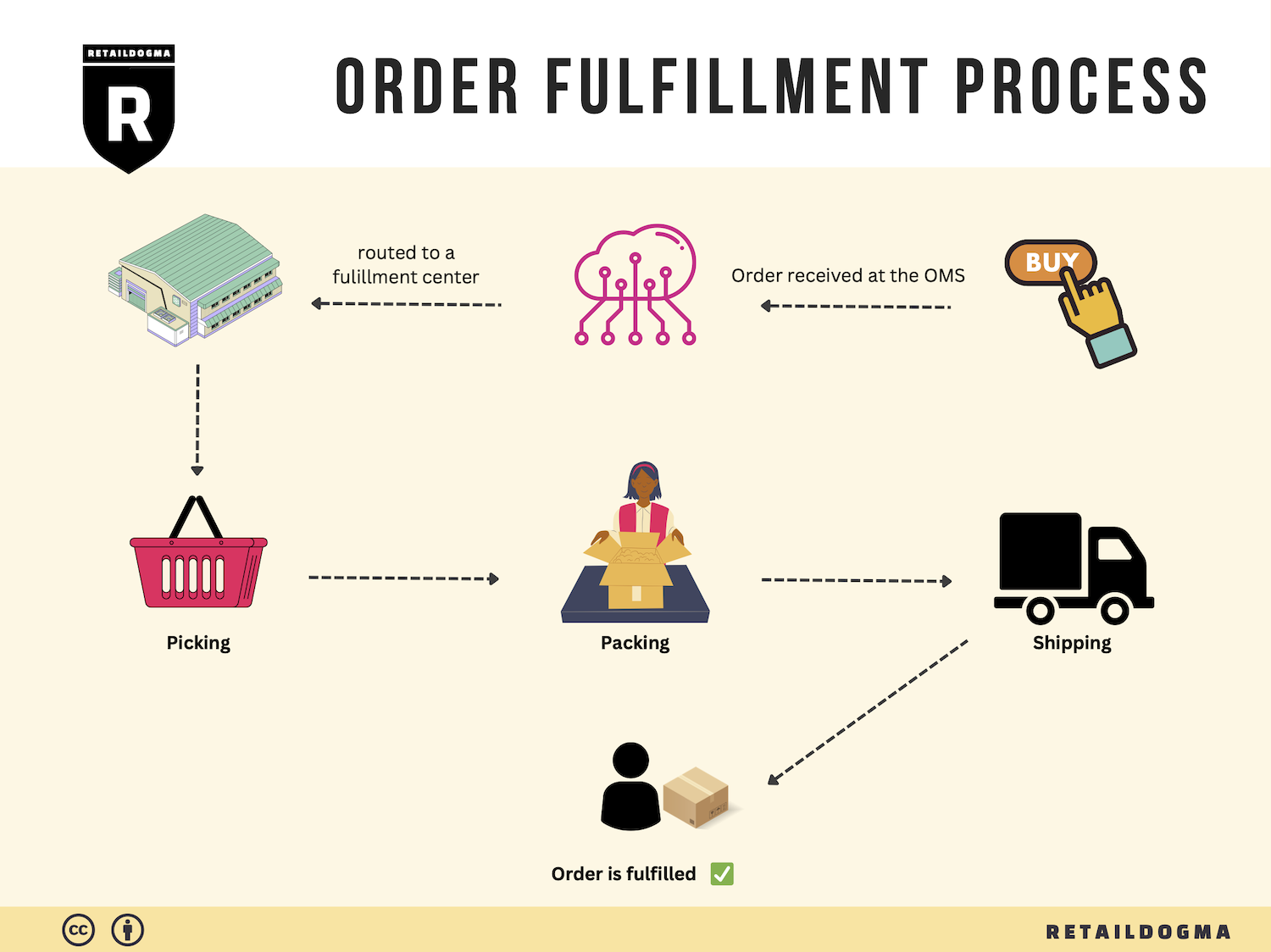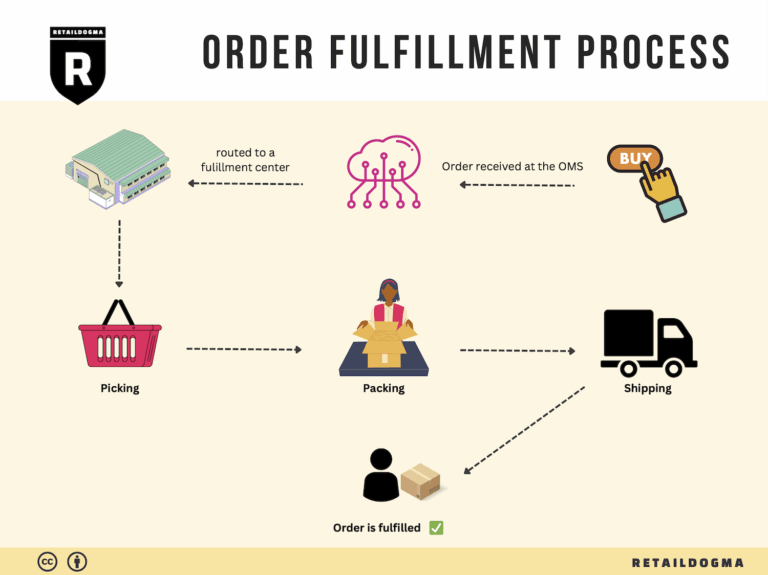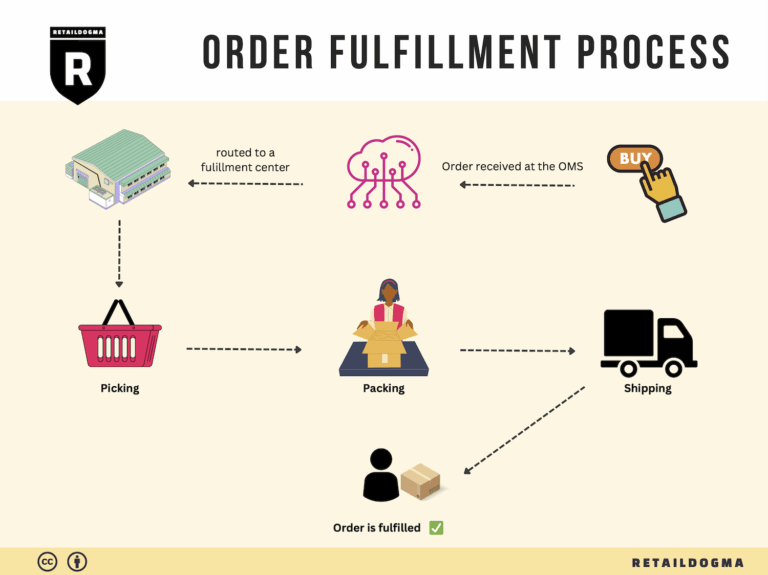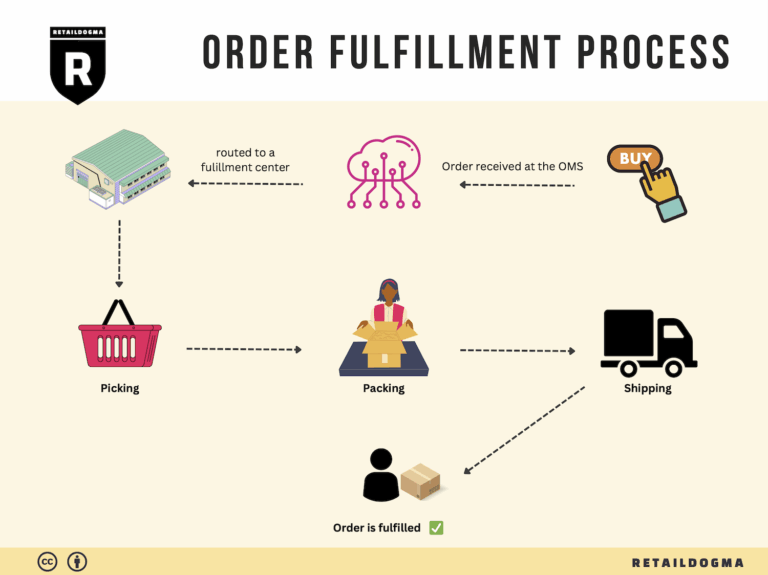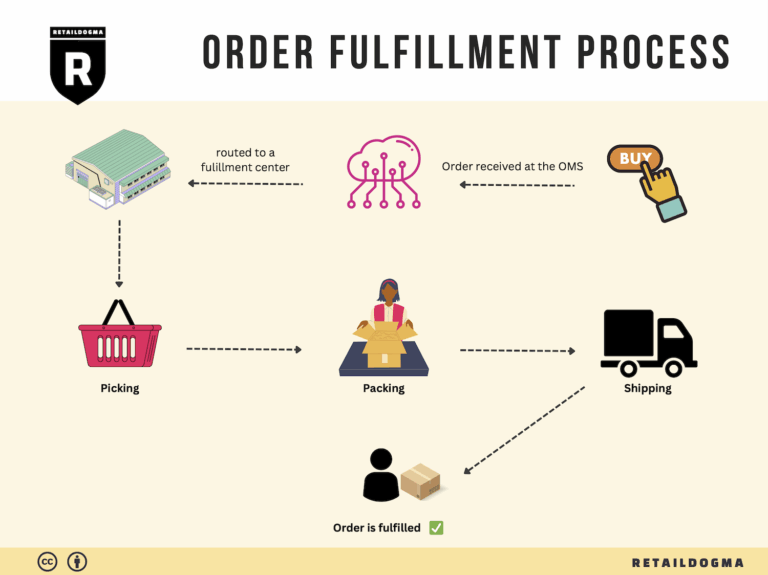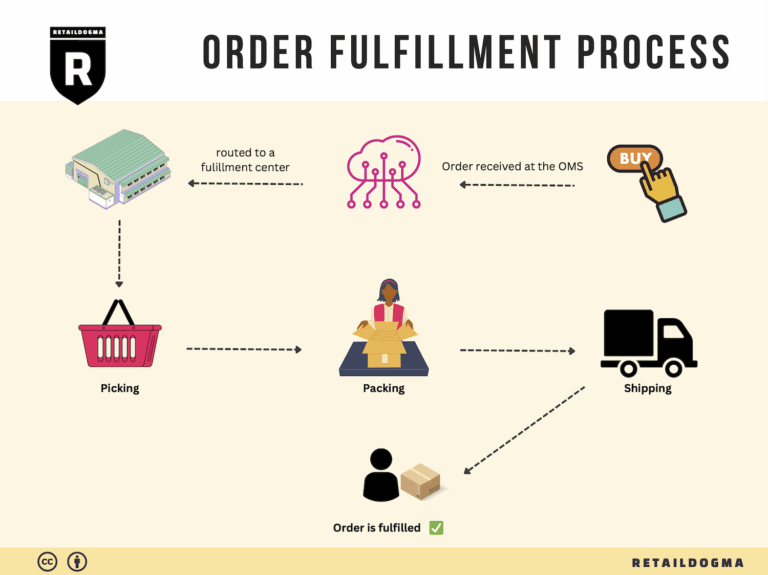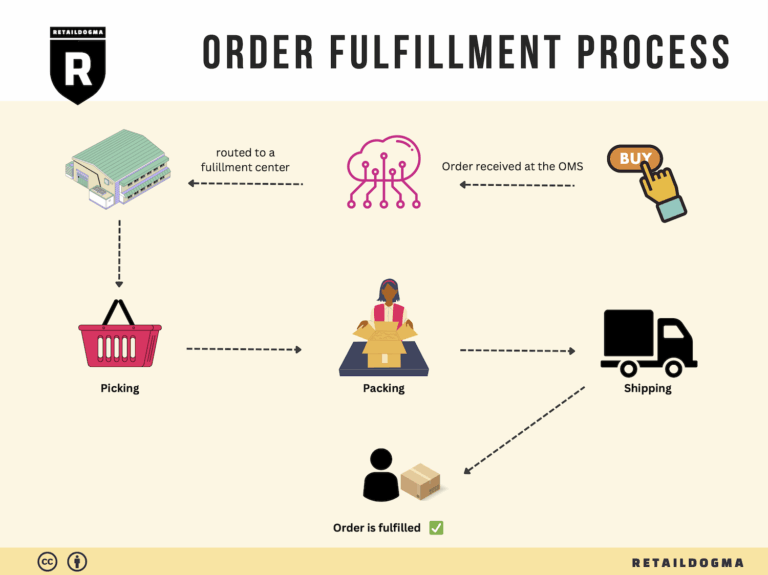What Is A Fulfillment Center? A Complete Guide (2025)
What is E-commerce Fulfillment? An Introduction for Growing Businesses
Understanding the Challenges of E-commerce Fulfillment
As an e-commerce business owner, you may find yourself overwhelmed by the complexities of packing and shipping orders. The excitement of growing your online store can quickly turn into stress when you realize that managing logistics is a time-consuming and intricate process. From ensuring timely deliveries to handling returns and maintaining inventory, the challenges can feel insurmountable.
Fulfillment is fundamentally the process of getting a product from your warehouse to the customer’s doorstep. It encompasses everything from receiving inventory and storing it efficiently to picking, packing, and shipping orders. This guide aims to simplify the concept of e-commerce fulfillment and help you navigate the various options available to scale your business effectively.
What This Guide Covers
In this comprehensive guide, we will explore the different fulfillment models available to online businesses, including Third-Party Logistics (3PL) and Fulfillment by Amazon (FBA). Understanding these models is crucial for determining which approach aligns best with your business needs.
We will delve into the core services offered by fulfillment providers, such as inventory management, order processing, and customer service support. Knowing what services are available will empower you to select a partner that can handle your specific requirements.
Choosing the right fulfillment partner is another critical aspect we will cover. Factors such as location, technology, scalability, and customer support play significant roles in ensuring your logistics operations run smoothly. We’ll provide practical tips on evaluating potential partners to find the best fit for your business.
Finally, we will discuss pricing structures in the fulfillment space, offering insights on what to expect and how to budget for these essential services. Understanding the cost implications will help you make informed decisions that positively impact your bottom line.
Empowering Your Business
The goal of this guide is to empower you with the knowledge needed to make smart decisions about your logistics strategy. As you scale your business, efficient fulfillment will be a cornerstone of your success. By understanding the different models, services, and partner evaluation criteria, you can streamline your operations and focus on what you do best—growing your brand and serving your customers.
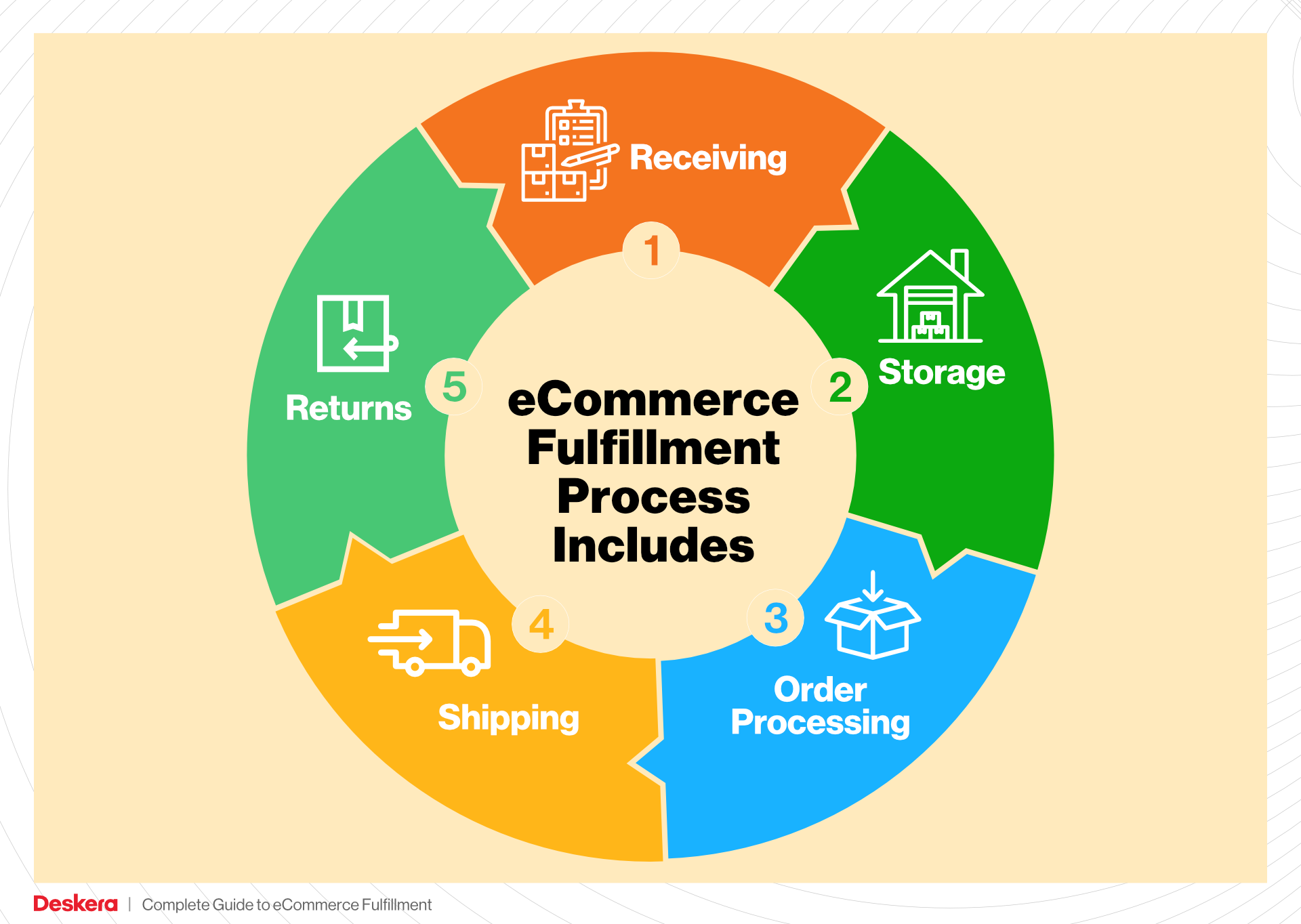
What You’ll Learn In This Guide
- What is E-commerce Fulfillment? An Introduction for Growing Businesses
- The Order Fulfillment Process: From ‘Buy’ Button to Customer’s Door
- Comparing Fulfillment Models: In-House vs. 3PL vs. Dropshipping
- A Deep Dive into Amazon FBA: Pros, Cons, and Who It’s For
- Core Services Offered by Fulfillment Centers
- How to Choose a Fulfillment Partner: A 6-Point Checklist
- Understanding Fulfillment Pricing: A Breakdown of Common Fees
- Frequently Asked Questions (FAQs) about Fulfillment
- Conclusion: Is Outsourcing Fulfillment the Right Move for Your Business?
- Important Disclaimer
The Order Fulfillment Process: From ‘Buy’ Button to Customer’s Door
1. Receiving Inventory
The order fulfillment process begins with receiving inventory at the fulfillment center. This crucial step involves the intake of products from suppliers or manufacturers, where each item is logged into the system. The use of Stock Keeping Units (SKUs) is essential here; each SKU acts as a unique identifier that helps in tracking products throughout the fulfillment process.
Upon arrival, the inventory is inspected for quality and accuracy against the purchase orders. Any discrepancies, such as damaged goods or incorrect quantities, are addressed immediately to ensure that only the right products are stored. This step is vital because it sets the foundation for inventory accuracy and availability, directly impacting customer satisfaction. Efficient inventory receiving minimizes delays in subsequent steps, ensuring that products are ready for orders as soon as they are placed.
2. Warehouse Storage
Once the inventory is received and verified, it is stored within the warehouse. The storage process involves organizing products in a manner that facilitates easy access and efficient retrieval. Utilizing advanced technologies like Warehouse Management Systems (WMS) can optimize storage layout, ensuring that high-demand items are placed in easily accessible locations.
Proper warehouse storage is significant for several reasons. Firstly, it maximizes the use of space and enhances operational efficiency. Secondly, it reduces the time required for order picking, which can lead to faster fulfillment times. The organization of products not only aids in inventory management but also minimizes the risk of misplacing items, which can lead to costly errors and delays in shipping.
3. Order Picking
The next step is order picking, where items are retrieved from storage based on customer orders. This process typically involves generating pick lists, which outline the specific items and quantities needed for each order. Workers or automated systems use these lists to navigate the warehouse efficiently.
Order picking is a critical phase in the fulfillment process because it directly affects order accuracy and speed. The quicker and more accurately items are picked, the faster they can be packed and shipped. Implementing technologies such as barcode scanners or RFID systems can streamline this process, reducing human error and improving efficiency. A well-optimized picking process ensures that customers receive the correct items on time, thus enhancing the overall shopping experience.
4. Order Packing
After items are picked, they move on to the packing stage. This involves securely packaging the products for shipment, often using materials that protect the items during transit. During this step, it’s crucial to generate packing slips, which provide details about the order and are included in the shipment for customer reference.
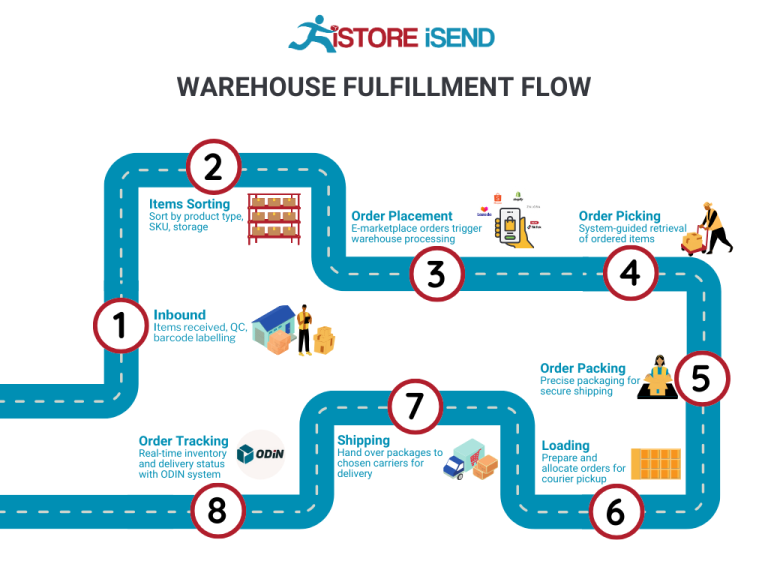
Packing is important for several reasons. Properly packed orders reduce the risk of damage during shipping, which can lead to returns and increased costs. Additionally, a well-presented package can enhance the customer experience and promote brand loyalty. Efficient packing processes also allow for optimal use of shipping space, reducing shipping costs and improving delivery efficiency. The packing stage is where businesses can differentiate themselves through branding and presentation, making it a vital touchpoint in the customer journey.
5. Shipping & Delivery
The final step in the order fulfillment process is shipping and delivery. Once packages are packed and labeled, they are handed over to carriers for distribution. This stage involves selecting the most appropriate shipping method based on cost, speed, and customer preferences. It’s essential to have a robust logistics strategy that includes partnerships with reliable shipping carriers to ensure timely delivery.
Shipping and delivery are pivotal because they directly impact customer satisfaction. Fast and reliable delivery can lead to repeat purchases and positive reviews, while delays can harm a business’s reputation. Providing customers with tracking information enhances transparency and allows them to monitor their orders, further improving the overall experience. Additionally, businesses should continuously analyze shipping performance to identify areas for improvement, ensuring that they remain competitive in the ever-evolving e-commerce landscape.
In conclusion, mastering the order fulfillment process is essential for e-commerce businesses looking to scale effectively. Each step, from receiving inventory to shipping and delivery, plays a vital role in ensuring customer satisfaction and operational efficiency. By leveraging technology and optimizing these processes, businesses can enhance their logistics capabilities and drive growth.
Comparing Fulfillment Models: In-House vs. 3PL vs. Dropshipping
Fulfillment Model Comparison
| Model | Who Handles Inventory | Best For (Business Stage) | Key Advantage | Key Disadvantage |
|---|---|---|---|---|
| In-House Fulfillment | The business itself | Established businesses with stable demand | Full control over inventory and operations | High overhead costs and complexity |
| Third-Party Logistics (3PL) | A logistics provider | Growing businesses seeking scalability | Access to expertise and technology | Less control over inventory and shipping |
| Dropshipping | The supplier | Startups and businesses testing new products | Low upfront investment and risk | Lower profit margins and longer shipping times |
In-House Fulfillment
In-house fulfillment refers to a model where the e-commerce business manages all aspects of inventory storage, order processing, and shipping internally. This setup is typically favored by established businesses that have a stable demand for their products and the necessary resources to invest in infrastructure. One of the most significant advantages of in-house fulfillment is the level of control it offers; businesses can directly manage their inventory, ensuring that they can quickly respond to changes in demand and maintain quality standards. Additionally, having an in-house team allows for more flexibility in operations, including custom packaging and branding, which can enhance customer experience.
However, there are notable disadvantages to this model. First and foremost, maintaining an in-house fulfillment operation can lead to high overhead costs, including warehousing, staffing, and technology investments. This complexity can become burdensome, especially for smaller businesses or those experiencing fluctuating demand. Moreover, the operational demands of in-house fulfillment can distract from core business activities, such as product development and marketing, potentially stunting growth.
Third-Party Logistics (3PL)
Third-party logistics (3PL) is a fulfillment model where businesses partner with a third-party provider to handle inventory management, warehousing, and shipping logistics. This model is particularly advantageous for growing businesses that require scalability without the burdens of managing logistics themselves. 3PL providers often come equipped with advanced technology and expertise in supply chain management, allowing businesses to leverage these resources to streamline their operations and improve delivery times.
The key advantage of utilizing 3PL is the ability to scale operations efficiently. As demand fluctuates, businesses can easily adjust their logistics needs without the need for significant capital investments in infrastructure or workforce. However, the downside is that businesses relinquish some control over their inventory and shipping processes. Dependence on a third party can lead to challenges in communication and potential misalignments in service levels, which may affect customer satisfaction. Additionally, the costs associated with 3PL services can accumulate, particularly if businesses do not carefully manage their agreements and service level expectations.
Dropshipping
Dropshipping is a fulfillment model where the retailer does not keep goods in stock. Instead, when a retailer sells a product, they purchase the item from a third-party supplier who then ships it directly to the customer. This model is often favored by startups and entrepreneurs testing new products or markets due to its low upfront investment and minimal risk. With dropshipping, businesses can offer a wide range of products without the burden of inventory management, enabling them to focus on marketing and sales.
The primary advantage of dropshipping is the low barrier to entry; there is no need to invest in inventory, warehousing, or fulfillment infrastructure. This flexibility allows businesses to experiment with different product lines and pivot quickly based on market demand. However, dropshipping also comes with significant disadvantages. Profit margins can be lower compared to other fulfillment models since retailers often pay a premium for the convenience of not holding stock. Additionally, shipping times can be longer, especially if products are sourced from suppliers located overseas, which can negatively impact customer satisfaction. Furthermore, retailers have less control over product quality and inventory levels, leading to potential issues with stockouts or fulfillment errors that can harm their brand reputation.
Conclusion
Choosing the right fulfillment model is crucial for e-commerce businesses aiming to scale their operations effectively. In-house fulfillment offers control and flexibility but can be costly and complex. Third-party logistics provide scalability and expertise but come with reduced control and potential communication challenges. Dropshipping allows for minimal risk and investment, making it ideal for startups, but it also presents challenges in terms of profit margins and shipping reliability. Understanding these models’ strengths and weaknesses will enable business owners to make informed decisions that align with their operational goals and customer expectations.
A Deep Dive into Amazon FBA: Pros, Cons, and Who It’s For
Understanding Fulfillment by Amazon (FBA)
Fulfillment by Amazon (FBA) is a service provided by Amazon that allows sellers to store their products in Amazon’s fulfillment centers. Once a customer makes a purchase, Amazon takes care of storage, packaging, shipping, and even customer service on behalf of the seller. This service is an integral part of Amazon’s logistics network and enables sellers to leverage Amazon’s vast infrastructure to enhance their operations.
How FBA Works
-
Product Storage: Sellers send their inventory to Amazon’s fulfillment centers. Each item is assigned a unique identifier, which helps Amazon manage inventory and track products.
-
Order Processing: When a customer places an order on Amazon, the FBA system automatically identifies the closest fulfillment center with the item in stock and initiates the packing and shipping process.
-
Shipping: Amazon takes care of the entire shipping process. Products are shipped using Amazon’s logistics network, which is known for its speed and reliability.
-
Customer Service: Amazon manages all customer service inquiries and returns for FBA products, allowing sellers to focus on other aspects of their business.
-
Inventory Management: Sellers can monitor their inventory levels through Amazon Seller Central, which provides real-time data on stock levels, sales, and order statuses.
Pros of Using FBA
-
Prime Eligibility: Products fulfilled through FBA are eligible for Amazon Prime, which can significantly increase sales. Prime members often prefer products that offer fast shipping, making FBA an attractive option for both sellers and customers.
-
Customer Trust: Using FBA enhances the credibility of a seller’s products. Customers are more likely to purchase items that are backed by Amazon’s trusted shipping and customer service, leading to higher conversion rates.
-
Multi-Channel Fulfillment: FBA allows sellers to fulfill orders from other sales channels (such as their own website) using Amazon’s logistics. This capability can streamline operations and reduce the complexities of managing multiple fulfillment processes.
-
Scalability: FBA is designed to support business growth. As sellers scale their operations, they can easily increase inventory levels without worrying about logistics, as Amazon handles the fulfillment.
-
Storage and Shipping Efficiency: Amazon’s advanced technology and vast logistics network allow for efficient storage and shipping processes, often reducing delivery times compared to individual seller-managed shipping.
Cons of Using FBA
-
High Fees: FBA comes with various fees, including storage fees for keeping inventory in Amazon’s warehouses and fulfillment fees for each order processed. These costs can add up, especially for low-margin products.
-
Strict Inventory Rules: Amazon has stringent rules regarding inventory management, including limits on storage space and requirements for labeling and packaging. Sellers must adhere to these rules to avoid penalties or removal from the program.
-
Commingling Risks: Amazon may commingle inventory from multiple sellers in the same warehouse, which can create risks of receiving incorrect items or issues with product returns. This can lead to complications, especially if there are quality issues with another seller’s products.
-
Loss of Control: By outsourcing fulfillment to Amazon, sellers relinquish some control over the customer experience. Issues related to shipping delays or customer service may reflect poorly on the seller, even if they are outside their control.
-
Inventory Management Challenges: Sellers must carefully manage their inventory levels to avoid long-term storage fees and stockouts, which can be particularly challenging for seasonal products or those with unpredictable demand.
Who is FBA Best For?
Fulfillment by Amazon is particularly well-suited for:
-
Small to Medium-sized Businesses: Companies looking to scale their operations without investing heavily in logistics can benefit greatly from FBA. It allows them to leverage Amazon’s logistics network while focusing on product development and marketing.
-
E-commerce Entrepreneurs: New sellers who want to enter the Amazon marketplace quickly can use FBA to streamline their operations. The ability to tap into Amazon’s vast customer base and logistics can be a significant advantage.
-
Brands with Established Products: Businesses that already have a strong product line and are looking to expand their reach can utilize FBA to enhance their distribution capabilities and improve customer trust.
-
Sellers with Diverse Product Lines: Companies that sell a variety of products, especially those that require frequent shipping, will find FBA’s efficiency and scalability beneficial in managing their inventory and fulfilling orders.
In conclusion, Fulfillment by Amazon offers a powerful solution for sellers looking to scale their operations and enhance their logistics. While there are notable advantages, such as Prime eligibility and customer trust, the potential downsides—like high fees and strict inventory management—must be carefully considered. By evaluating their business needs and growth potential, e-commerce entrepreneurs can determine if FBA is the right fit for their operations.
Core Services Offered by Fulfillment Centers
Inventory Management & Warehousing
Inventory management and warehousing are foundational services provided by fulfillment centers, designed to optimize the storage and organization of products. Fulfillment centers like Amazon PHL6 utilize advanced inventory management systems that track stock levels in real time. This technology allows businesses to maintain optimal inventory levels, reducing the risk of stockouts or overstock situations.
The benefits of effective inventory management extend far beyond mere organization. For e-commerce businesses, it ensures that products are readily available for quick shipment, which is crucial for maintaining high customer satisfaction and loyalty. Additionally, accurate inventory tracking helps in forecasting demand, enabling businesses to make informed purchasing decisions and minimize carrying costs. By leveraging a fulfillment center’s warehousing capabilities, businesses can free up valuable space and resources, allowing them to focus on scaling operations and enhancing their marketing efforts.
Pick and Pack Services
Pick and pack services are integral to the efficiency of order fulfillment in e-commerce. This process involves selecting items from the warehouse (picking) and then packing them for shipment (packing). Fulfillment centers employ sophisticated technology, such as barcode scanning and automated sorting systems, to streamline this process, ensuring high accuracy and speed.
The primary benefit of utilizing pick and pack services is the acceleration of order processing times. With fulfillment centers handling these tasks, e-commerce businesses can significantly reduce the time it takes from order placement to delivery. This speed not only enhances customer satisfaction through faster shipping but also allows businesses to scale their operations without the need for additional labor or infrastructure. Moreover, by outsourcing these functions, companies can reduce operational complexities and focus on core business activities, such as product development and marketing strategies.
Kitting and Assembly
Kitting and assembly services involve bundling multiple products into a single package or assembling components into a finished product before shipping. This service is particularly beneficial for businesses that sell products that are often purchased together or require assembly before use. Fulfillment centers like Amazon PHL6 can efficiently handle these tasks, utilizing skilled labor and specialized equipment to ensure quality and consistency.
The advantages of kitting and assembly extend to both operational efficiency and customer experience. By offering pre-assembled kits, e-commerce businesses can simplify the purchasing process for customers, encouraging larger orders and enhancing the perceived value of their offerings. Furthermore, these services can help reduce shipping costs by consolidating multiple items into a single package, which not only minimizes packaging waste but also improves shipping efficiency. For businesses looking to differentiate themselves in a competitive marketplace, providing kitted products can be a powerful strategy to enhance customer satisfaction and drive sales.
Returns Management (Reverse Logistics)
Returns management, often referred to as reverse logistics, is a critical service offered by fulfillment centers, facilitating the process of handling returns and exchanges. This service includes receiving returned items, assessing their condition, and restocking them or processing them for resale or disposal as needed. Efficient returns management is essential for maintaining customer trust and loyalty in the e-commerce landscape.
The key benefit of effective returns management lies in its impact on customer satisfaction and retention. A seamless returns process can significantly enhance the overall shopping experience, making customers more likely to return for future purchases. Fulfillment centers also utilize data from returns to identify trends and issues, providing valuable insights that can inform product development and inventory decisions. By outsourcing returns management to a fulfillment center, e-commerce businesses can streamline operations and reduce the administrative burden associated with processing returns, allowing them to focus on growth and innovation.
In conclusion, leveraging the core services offered by fulfillment centers such as Amazon PHL6 can empower e-commerce businesses to optimize their logistics, enhance customer satisfaction, and scale their operations effectively. By integrating these services into their operational strategy, businesses can not only improve efficiency but also position themselves for sustained growth in a competitive marketplace.
How to Choose a Fulfillment Partner: A 6-Point Checklist
Location & Warehouse Network
Importance: The geographical location of your fulfillment partner’s warehouses is crucial for optimizing shipping times and costs. A strategically located warehouse can significantly reduce transit times to your customers, which is essential for customer satisfaction and repeat business.
Questions to Ask:
– Where are your warehouses located, and how does that align with my target market?
– How do you manage inventory across multiple locations?
– Can you provide insights on shipping times and costs based on your warehouse locations?
Technology & Integrations
Importance: In today’s fast-paced e-commerce environment, technology is a key differentiator. Your fulfillment partner should use advanced technology to streamline operations, manage inventory, and integrate seamlessly with your existing systems.
Questions to Ask:
– What type of warehouse management system (WMS) do you use, and how does it enhance efficiency?
– Can your system integrate with my e-commerce platform and other software (e.g., ERP, CRM)?
– How do you handle real-time inventory updates and order tracking?
Specializations (e.g., Cold Storage, Oversized Items)
Importance: Depending on your product offerings, it’s essential to partner with a fulfillment provider that specializes in handling specific types of goods. For instance, if you sell perishable items, a partner with cold storage capabilities will be necessary.
Questions to Ask:
– What types of products do you specialize in handling (e.g., food, electronics, oversized items)?
– Do you have the necessary certifications and facilities to store sensitive items (e.g., temperature control)?
– How do you ensure compliance with industry regulations for specialized goods?
Scalability & Capacity
Importance: As your business grows, your fulfillment partner should be able to scale operations to meet increased demand. A partner with sufficient capacity can handle fluctuations in order volume without sacrificing service quality.
Questions to Ask:
– What is your current capacity for handling orders, and how do you manage peak seasons?
– Can you provide case studies or examples of how you’ve scaled operations for other clients?
– What plans do you have for expanding your warehouse capabilities in the future?
Pricing and Contracts
Importance: Understanding the cost structure of your fulfillment partner is essential for budgeting and profitability. Transparent pricing helps avoid unexpected costs and ensures you can maintain healthy margins.
Questions to Ask:
– Can you provide a detailed breakdown of your pricing model (e.g., storage fees, pick and pack fees, shipping costs)?
– Are there any additional fees that I should be aware of (e.g., for handling returns or special packaging)?
– What are the terms of the contract, and is there flexibility in case my needs change?
Customer Support & Reviews
Importance: Excellent customer support can make or break your experience with a fulfillment partner. Responsive and knowledgeable support ensures that any issues are resolved quickly, minimizing disruptions to your business.
Questions to Ask:
– What customer support options do you offer (e.g., phone, email, live chat)?
– Can you provide references or case studies from current or past clients?
– How do you handle complaints or issues that arise during the fulfillment process?
Conclusion
Choosing the right fulfillment partner is a critical decision that can significantly impact your e-commerce operations. By using this checklist, you can systematically evaluate potential partners and ensure that they align with your business needs. Prioritize these factors to foster a successful partnership that supports your growth and enhances your customer experience.
Understanding Fulfillment Pricing: A Breakdown of Common Fees
Initial Setup Fees
When onboarding with an Amazon fulfillment center, businesses may encounter initial setup fees. These charges cover the costs associated with integrating your products into Amazon’s Fulfillment by Amazon (FBA) system. The setup fee typically includes the registration process, account verification, and possibly even training on how to navigate the Amazon Seller Central dashboard.
The calculation of initial setup fees can vary based on the size of your inventory and the complexity of your operations. For instance, if you’re launching a new product line with numerous SKUs, the setup fees may increase due to the additional time and resources required for configuration. Businesses should carefully review all associated costs upfront to avoid unexpected expenses.
Receiving Fees
Receiving fees are incurred when your inventory arrives at an Amazon fulfillment center. These fees cover the labor and equipment costs associated with unloading, inspecting, and storing your products. Amazon typically charges per unit received, which means that the more items you send, the higher the total receiving fees will be.
To calculate receiving fees, Amazon assesses the number of units delivered to their warehouse. This includes any incoming shipments, whether they are bulk shipments or individual items. Businesses should consider optimizing their shipping methods and consolidating shipments to minimize these costs.
Storage Fees (per pallet/bin)
Storage fees are charged for the space your products occupy within the fulfillment center. These fees are typically calculated on a per-pallet or per-bin basis and can vary based on the time of year. For example, Amazon often imposes higher storage fees during peak seasons, such as the holiday shopping period, due to increased demand for warehouse space.
To manage storage fees effectively, businesses should monitor their inventory turnover rates and adjust their stock levels accordingly. It’s essential to analyze which products sell well and which do not, allowing you to optimize your storage needs and reduce unnecessary costs.
Pick & Pack Fees (per item/order)
Pick and pack fees are charged for the labor involved in selecting items from inventory and preparing them for shipment. These fees can be calculated on a per-item basis or per order. If your business has a diverse range of products, it may incur higher pick and pack fees due to the labor-intensive nature of retrieving multiple items for a single order.
To mitigate pick and pack fees, consider streamlining your product offerings or utilizing Amazon’s Multi-Channel Fulfillment service, which can help optimize the picking process. Additionally, bundling related products can minimize the number of items picked per order, ultimately reducing costs.
Shipping Fees
Shipping fees encompass the costs associated with transporting products from the fulfillment center to the customer. These fees can vary based on several factors, including the destination, shipping method (standard, expedited, etc.), and the size and weight of the package. Amazon typically provides tiered pricing based on these variables.
Businesses should be aware that shipping fees can significantly impact overall profitability. To calculate accurate shipping fees, use Amazon’s shipping calculator, which provides estimates based on your specific product dimensions and weight. Additionally, explore options like Amazon’s Partnered Carrier program, which can offer discounted shipping rates for FBA sellers.
Conclusion: Tips for Getting an Accurate Quote
To ensure that you receive an accurate quote for fulfillment services, consider the following tips:
-
Understand Your Inventory Needs: Assess the types of products you plan to sell and their respective dimensions and weights. This information is crucial for calculating storage and shipping fees.
-
Consolidate Shipments: Minimize receiving fees by consolidating shipments to the fulfillment center. This can also help reduce the overall number of pick and pack operations.
-
Use Amazon’s Tools: Leverage Amazon’s Seller Central and related tools to get real-time insights into your inventory and costs. This can help you forecast expenses more accurately.
-
Communicate with Your Fulfillment Partner: Regularly engage with your fulfillment center to clarify any questions regarding fees and services. Establishing a good relationship can lead to better service and potentially lower costs.
-
Review and Adjust Regularly: Monitor your fulfillment costs on a regular basis. Market conditions, inventory levels, and sales trends can change, so staying informed will help you adapt and optimize your operations efficiently.
By understanding these common fulfillment pricing models, e-commerce businesses can make informed decisions that enhance their operational efficiency and ultimately drive profitability.
Frequently Asked Questions (FAQs) about Fulfillment
1. What is Amazon Fulfillment PHL6?
Amazon Fulfillment PHL6 is a highly automated fulfillment center located in Carlisle, Pennsylvania. It plays a crucial role in Amazon’s logistics network, managing the storage, packing, and shipping of millions of products daily to ensure rapid delivery to customers.
2. What services does Amazon Fulfillment PHL6 provide?
PHL6 offers a range of services including inventory storage, order processing, packing, and shipping. It utilizes advanced technology and automation to enhance efficiency, ensuring that products are delivered to customers quickly and accurately.
3. How does the Fulfillment by Amazon (FBA) program work?
The Fulfillment by Amazon (FBA) program allows sellers to leverage Amazon’s extensive logistics network. Sellers send their products to Amazon fulfillment centers like PHL6, where Amazon takes care of storage, packing, shipping, and customer service, simplifying the selling process for businesses.
4. What’s the difference between a warehouse and a fulfillment center?
A warehouse primarily focuses on storing goods, while a fulfillment center is designed to handle the entire process of order fulfillment. This includes receiving, processing, packing, and shipping products directly to customers, often with additional services like inventory management and returns processing.
5. How much do fulfillment services cost?
The cost of fulfillment services can vary widely depending on factors such as the size and weight of products, the volume of orders, and specific service requirements. Generally, fulfillment fees include storage fees, pick and pack fees, and shipping costs. It’s essential for businesses to calculate these based on their specific needs and volume to get an accurate estimate.
6. What technology does Amazon Fulfillment PHL6 use to streamline operations?
PHL6 employs state-of-the-art technology including robotics, automated sorting systems, and real-time inventory management software. This technology helps optimize the picking and packing processes, ensuring high efficiency and accuracy in order fulfillment.
7. How can I track my inventory in Amazon Fulfillment PHL6?
Sellers can track their inventory in Amazon Fulfillment PHL6 through the Amazon Seller Central dashboard. This platform provides real-time updates on inventory levels, order statuses, and shipping information, allowing sellers to manage their stock effectively.
8. What are the benefits of using Amazon Fulfillment PHL6 for my business?
Utilizing Amazon Fulfillment PHL6 offers several benefits, including access to Amazon’s vast customer base, faster shipping times, and reduced operational burdens. Sellers can also benefit from Amazon’s customer service and return handling, allowing them to focus on other aspects of their business.
9. Can I use Amazon Fulfillment PHL6 for international shipping?
Yes, Amazon Fulfillment PHL6 can facilitate international shipping through the FBA program. However, sellers should be aware of additional fees, customs regulations, and potential delays associated with international orders.
10. How can I get started with Fulfillment by Amazon at PHL6?
To get started with FBA at PHL6, businesses need to create an Amazon Seller account, list their products, and prepare their inventory for shipment to the fulfillment center. Detailed guidelines and resources are available on the Amazon Seller Central website to assist sellers throughout the onboarding process.
Conclusion: Is Outsourcing Fulfillment the Right Move for Your Business?
Key Benefits of Outsourcing Fulfillment
Outsourcing fulfillment can be a transformative strategy for e-commerce businesses seeking to scale efficiently. One of the primary advantages is time savings. By partnering with a fulfillment service, you can redirect your focus from the complexities of logistics to core business activities such as marketing, product development, and customer engagement. This shift not only enhances productivity but also accelerates growth.
Another significant benefit is scalability. As your business grows, so do the demands on your fulfillment process. A dedicated fulfillment partner, like Amazon PHL6, offers the infrastructure and technology necessary to adapt to fluctuating order volumes seamlessly. This flexibility ensures that you can meet customer expectations without the burden of managing additional warehousing or staffing challenges.
Furthermore, outsourcing provides expertise. Fulfillment centers leverage advanced technology and industry best practices to optimize inventory management, packing, and shipping processes. This expertise can lead to improved order accuracy, reduced shipping times, and enhanced customer satisfaction—all critical components of a successful e-commerce operation.
Choosing the Right Partner for Growth
While the benefits of outsourcing fulfillment are clear, choosing the right partner is crucial for sustainable growth. Evaluate potential partners based on their technology, location, scalability options, and customer service capabilities. Your fulfillment partner should align with your business goals and enhance your operational efficiency.
Call to Action
As you contemplate the future of your e-commerce business, consider conducting a thorough audit of your current shipping processes. Are there inefficiencies that could be addressed? Could a fulfillment partner like Amazon PHL6 streamline your operations? Assessing your logistics strategy is the first step toward unlocking new growth opportunities. Embrace the potential of outsourcing fulfillment and position your business for success in an increasingly competitive landscape.
Important Disclaimer
⚠️ Important Disclaimer
The information in this guide is for educational purposes. Fulfillment services, pricing, and platform features change frequently. Always conduct your own due diligence and consult with providers directly before making business decisions.
